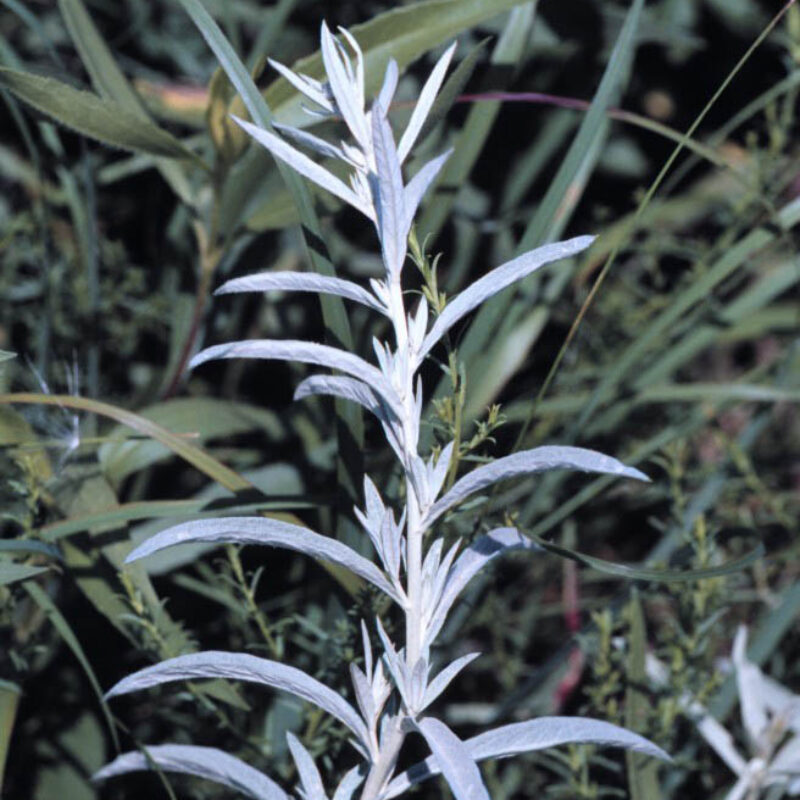Prairie SageArtemisia ludoviciana
Prairie sage is a native perennial that is grown for its silvery gray foliage. It is a good groundcover for sunny, dry slopes because of its aggressive habit. This species is also good for restorations, as a contrast plant in landscapes and for aromatic use. Spreads quickly in gardens.
USDA symbol: ARLU
General Information
| Plant Type | Forb |
|---|---|
| Height | 2 to 3 feet |
| Light Exposure | Sun |
| Soil Moisture | Dry, Medium |
| Bloom Color | Green |

Tolerances
| Flooding / Inundation Tolerance | Moderate |
|---|---|
| General Resilience | 9 |
| Salt Tolerance | High |
| Stress Tolerance | Drought Tolerant, Fire Tolerant |
Pollinator Value: High
| Bloom Months | May to October |
|---|---|
| Pollinator Benefit | Stem Nesting |
Project Planning
| Project Type | Restoration, Sandy or Engineered Soils, Upland Buffer |
|---|---|
| Coefficient of Conservatism | 4 |
| Herbivore Sensitivity | Medium |
| Lifespan | Perennial |
| Rate of Spread | Fast |
| Soil Stabilization | Shallow |
| Vegetative Reproduction | Clonal |
Range
| County | Anoka, Becker, Benton, Big Stone, Blue Earth, Brown, Carlton, Cass, Chippewa, Chisago, Clay, Clearwater, Cottonwood, Crow Wing, Dakota, Dodge, Douglas, Faribault, Fillmore, Freeborn, Goodhue, Grant, Hennepin, Houston, Hubbard, Isanti, Itasca, Jackson, Kandiyohi, Kittson, Lac qui Parle, Lake, Lake of the Woods, Le Sueur, Lincoln, Lyon, Mahnomen, Marshall, Martin, McLeod, Meeker, Mille Lacs, Morrison, Mower, Nicollet, Nobles, Norman, Olmsted, Otter Tail, Pennington, Pipestone, Polk, Pope, Ramsey, Red Lake, Redwood, Renville, Rice, Rock, Roseau, Scott, Sherburne, St. Louis, Stearns, Steele, Stevens, Swift, Todd, Traverse, Wabasha, Wadena, Waseca, Washington, Watonwan, Wilkin, Winona, Wright, Yellow Medicine |
|---|---|
| Ecoregion | Driftless Area, Lake Agassiz Plain, North Central Hardwood Forests, Northern Glaciated Plains, Northern Lakes and Forests, Northern Minnesota Wetlands, Western Cornbelt Plains |
| Approximate Eco Province | Eastern Broadleaf Forest, Laurentian Mixed Forest, Prairie Parkland, Tallgrass Aspen Parklands |
